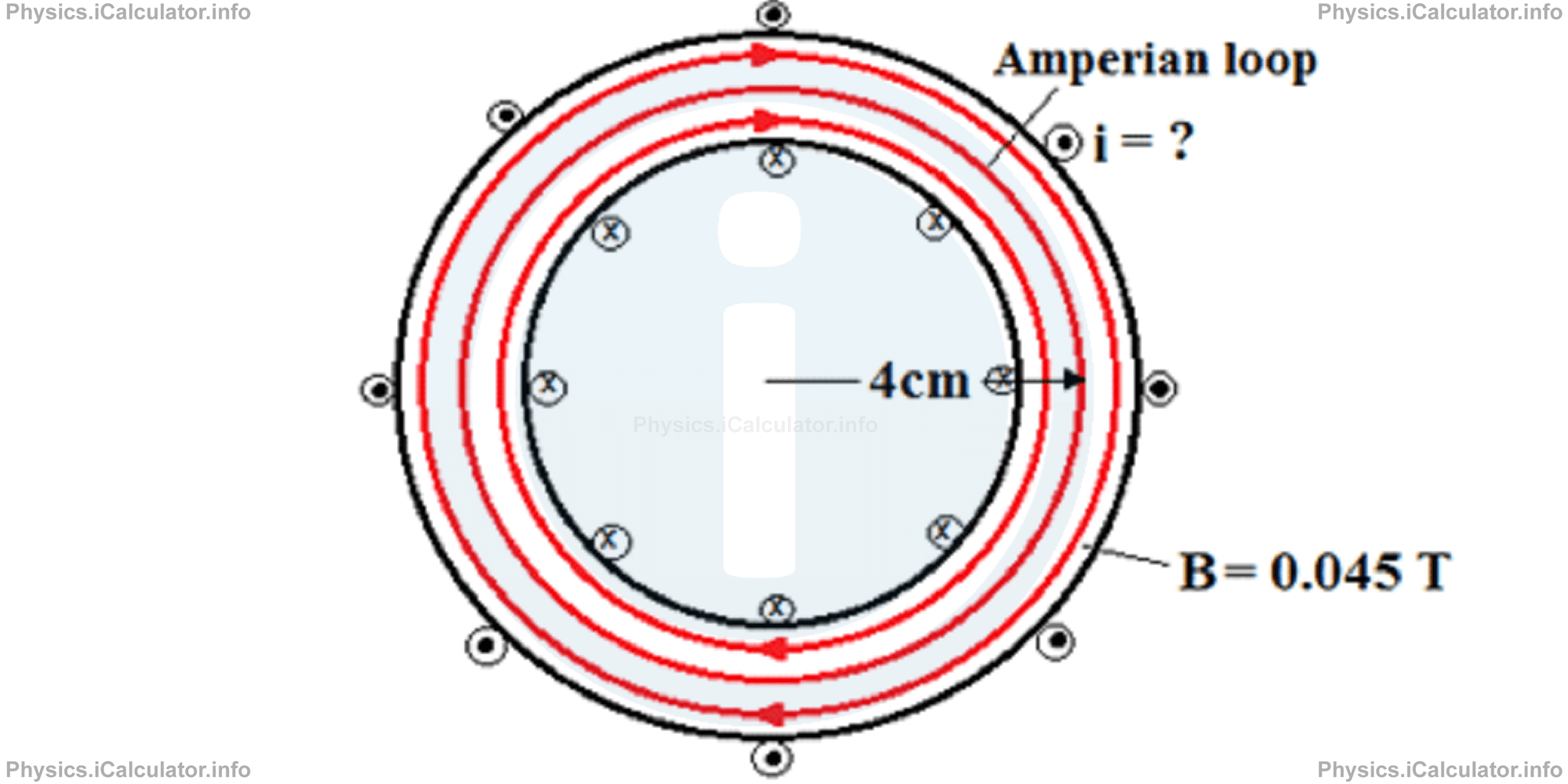Menu
Ampere's Law Practice Questions
Please provide a rating, it takes seconds and helps us to keep this resource free for all to use
The following physics revision questions are provided in support of the physics tutorial on Ampere's Law. In addition to this tutorial, we also provide revision notes, a video tutorial, revision questions on this page (which allow you to check your understanding of the topic) and calculators which provide full, step by step calculations for each of the formula in the Ampere's Law tutorials. The Ampere's Law calculators are particularly useful for ensuring your step-by-step calculations are correct as well as ensuring your final result is accurate.
Not sure on some or part of the Ampere's Law questions? Review the tutorials and learning material for Ampere's Law
| Tutorial ID | Title | Tutorial | Video Tutorial | Revision Notes | Revision Questions | |
|---|---|---|---|---|---|---|
| 16.6 | Ampere's Law |
Ampere's Law Revision Questions
1) A 4 mT magnetic field is produced at an Amperian loop taken outside a long straight conductor when current I is flowing through it as shown in the figure (it gives an upper view).

What is the magnitude of current flowing through the wire?
- 1.6π A
- 1.6 A
- 16 A
- 160 A
Correct Answer: D
2) A 4 cm thick cable (radius = 2 cm) carries 12A current. What is the magnetic field (magnitude and direction) 6 mm away from the centre of cross-section of the cable? (There is a ⊗ symbol at centre of figure)

- 36 mT clockwise
- 36 μT clockwise
- 36 μT anticlocwise
- 0.72 μT anticlockwise
Correct Answer: B
3) What is the current flowing through the windings of a toroid containing 1000 turns if the magnetic field inside the toroid 4cm away from its centre is 0.045 T?

- 9A
- 4.5A
- 9π A
- 4.5π A
Correct Answer: A
Whats next?
Enjoy the "Ampere's Law" practice questions? People who liked the "Ampere's Law" practice questions found the following resources useful:
- Practice Questions Feedback. Helps other - Leave a rating for this practice questions (see below)
- Magnetism Physics tutorial: Ampere's Law. Read the Ampere's Law physics tutorial and build your physics knowledge of Magnetism
- Magnetism Revision Notes: Ampere's Law. Print the notes so you can revise the key points covered in the physics tutorial for Ampere's Law
- Check your calculations for Magnetism questions with our excellent Magnetism calculators which contain full equations and calculations clearly displayed line by line. See the Magnetism Calculators by iCalculator™ below.
- Continuing learning magnetism - read our next physics tutorial: Faraday's Law of Induction
Help others Learning Physics just like you
Please provide a rating, it takes seconds and helps us to keep this resource free for all to use
We hope you found this Physics tutorial "Ampere's Law" useful. If you did it would be great if you could spare the time to rate this physics tutorial (simply click on the number of stars that match your assessment of this physics learning aide) and/or share on social media, this helps us identify popular tutorials and calculators and expand our free learning resources to support our users around the world have free access to expand their knowledge of physics and other disciplines.
Magnetism Calculators by iCalculator™
- Angular Frequency Of Oscillations In Rlc Circuit Calculator
- Calculating Magnetic Field Using The Amperes Law
- Capacitive Reactance Calculator
- Current In A Rl Circuit Calculator
- Displacement Current Calculator
- Electric Charge Stored In The Capacitor Of A Rlc Circuit In Damped Oscillations Calculator
- Electric Power In A Ac Circuit Calculator
- Energy Decay As A Function Of Time In Damped Oscillations Calculator
- Energy Density Of Magnetic Field Calculator
- Energy In A Lc Circuit Calculator
- Faradays Law Calculator
- Frequency Of Oscillations In A Lc Circuit Calculator
- Impedance Calculator
- Induced Emf As A Motional Emf Calculator
- Inductive Reactance Calculator
- Lorentz Force Calculator
- Magnetic Dipole Moment Calculator
- Magnetic Field At Centre Of A Current Carrying Loop Calculator
- Magnetic Field In Terms Of Electric Field Change Calculator
- Magnetic Field Inside A Long Stretched Current Carrying Wire Calculator
- Magnetic Field Inside A Solenoid Calculator
- Magnetic Field Inside A Toroid Calculator
- Magnetic Field Produced Around A Long Current Carrying Wire
- Magnetic Flux Calculator
- Magnetic Force Acting On A Moving Charge Inside A Uniform Magnetic Field Calculator
- Magnetic Force Between Two Parallel Current Carrying Wires Calculator
- Magnetic Potential Energy Stored In An Inductor Calculator
- Output Current In A Transformer Calculator
- Phase Constant In A Rlc Circuit Calculator
- Power Factor In A Rlc Circuit Calculator
- Power Induced On A Metal Bar Moving Inside A Magnetic Field Due To An Applied Force Calculator
- Radius Of Trajectory And Period Of A Charge Moving Inside A Uniform Magnetic Field Calculator
- Self Induced Emf Calculator
- Self Inductance Calculator
- Torque Produced By A Rectangular Coil Inside A Uniform Magnetic Field Calculator
- Work Done On A Magnetic Dipole Calculator